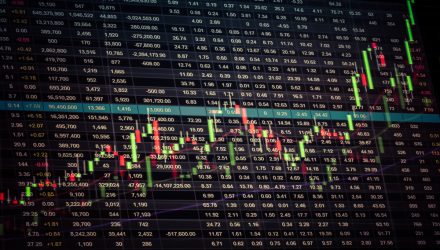The market volatility following March’s sell-offs due to the Covid-19 pandemic may have helped actively managed exchange-traded funds (ETFs) resurface in the capital markets. With the ability to shift with the ebb and flow of the markets, more upside could be ahead for active ETFs.
As far as what active funds to consider, investors can continue to look at technology, but more specifically, the technology of tomorrow that’s poised for disruption. Investors looking for a broad ETF play in disruptive technology can look at the ARK Innovation ETF (NYSEArca: ARKK).
“It’s been a fascinating time to be an active manager,” founder and CEO Cathie Wood of ARK Invest told MarketWatch back in June.
Per the MarketWatch article, so far this year “ARKK’s share price basically has doubled itself: it’s up 98.2% as of the close of business Wednesday. That compares with a 26% gain for the Nasdaq COMP, +0.49% over the same stretch. ARKK’s assets under management also mushroomed: up $4.2 billion so far in 2020, according to FactSet, to $8.9 billion.”
“The ARK lineup, and ARKK in particular, take thematic investing, which has been gaining traction, and do stock picking with a very patient approach,” said Todd Rosenbluth, CFRA head of ETF research. “She’s been right a lot. It’s just impressive. It’s a strategy that combines a few different innovative themes. It’s also a swing for the fences strategy, and she’s been connecting and hitting home runs. It’s a home run year. Will it continue? That’s to be determined, but we have a five star rating on the ETF, in part, based on its performance and, in part, based on its holdings.”
Delving deeper into the fund, ARKK seeks to provide investors with:
- Exposure to Innovation: Aims for thematic multi-cap exposure to innovation across sectors. ARK believes the securities held in ARKK present the best risk-reward opportunities from ARK’s innovation-based themes.
- Growth Potential: Aims to capture long-term alpha+ with a low correlation of relative returns to traditional growth strategies and negative correlation to value strategies.
- Diversification: Offers a tool for diversification due to little overlap with traditional indices. It can be a complement to traditional value/growth strategies.
- Research: Combines top-down and bottom-up research in its portfolio management to identify innovative companies and convergence across markets.
- Cost-Effectiveness: Provides a lower-cost alternative to mutual funds with true active management in an Exchange Traded Fund (ETF) that invests in rapidly moving themes.
For more market trends, visit ETF Trends.


